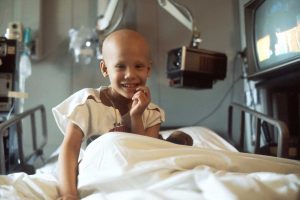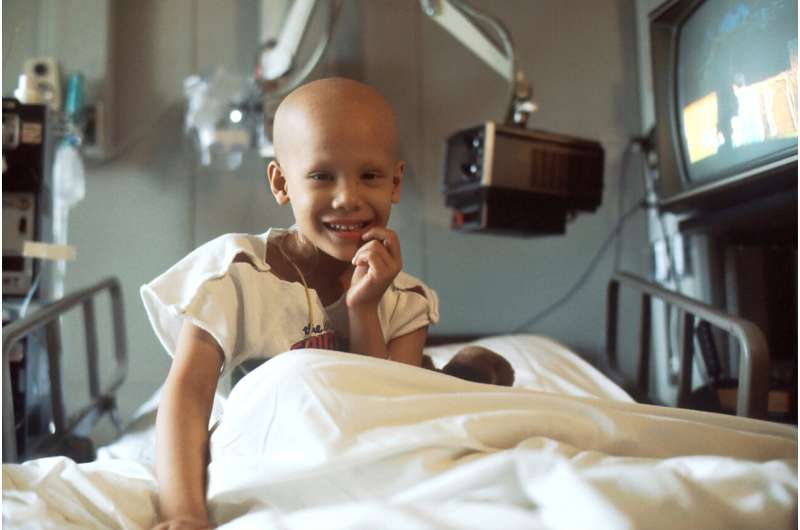Researchers use AI to track chemotherapy complications, help families fighting pediatric cancer


In Mexico, where cancer is the second leading cause of death for children, families travel a significant distance to specialty hospitals for chemotherapy treatment. After each round of chemotherapy, children are typically sent home to recover. But when a patient leaves the hospital after treatment, there is no system to follow up on their recovery or outcome. Meanwhile, families are left without guidance on when to seek medical attention for complications.
This was the challenge that Nitesh Chawla, the Frank M. Freimann Professor of Computer Science and Engineering and founding director of the Lucy Family Institute for Data & Society at the University of Notre Dame, and Angélica García Martínez, postdoctoral research associate at the Lucy Family Institute, set out to address. They wanted to find a way to track chemotherapy complications that supported both caregivers’ and medical workers’ needs. To do this, the Lucy Family Institute team is collaborating with the Hospital Infantil de México Federico Gómez (HIMFG), which serves a third of pediatric cancer patients in the region surrounding Mexico City.
“The families make a long commute to HIMFG for their children’s treatment, and the number of patients far exceeds the number of beds that may be available in the ER or for in-patients. How do they decide who they serve each day?” Chawla said. “We are working with them to not only digitally capture clinical data but also social determinants of health data, so that the physicians can be assisted with AI-supported decision-making to better manage the patient population while supporting families taking care of their children battling cancer.”
The goal is to develop an artificial intelligence model that helps hospital staff assess pediatric patients who have developed neutropenia, a lower-than-normal white blood cell count that increases the risk for infection, following chemotherapy treatment. The condition affects about 50% of pediatric patients.
The model would output how likely patients with neutropenia are to develop adverse outcomes, such as infection, internal bleeding, neutropenic enterocolitis, persistent neutropenia, or septic shock and mortality. This would help the hospital better prioritize needs for its limited space and beds, while providing peace of mind for families who have traditionally lacked understanding of the risks after chemotherapy.
“What we’re trying to do is not just get accurate predictions, but also create a model representation that people can actually understand, analyze directly and extract knowledge from so that the health care workers can improve their processes at the hospital,” said Jennifer Schnur, a computer science doctoral student advised by Chawla and a researcher working on the AI model.
Schnur’s previous experience as a health care analyst has given her unique insight into this work. She noted that although the model needs to capture complex patterns to get the right performance, it also needs to balance the human understandability of the data, so that the information can be effectively used to benefit patients.
But creating the model requires complete and accurate data, and the Mexican health care system currently relies on paper records. Therefore the Lucy Family Institute developed an app for data collection, allowing doctors, social workers and researchers to track and report the majority of a patient’s health care and social determinants information prior to and during chemotherapy treatments. Meanwhile, caregivers and families are also using the app to track patient recovery from chemotherapy at home. If a pediatric cancer patient is admitted to the emergency department due to complications after treatment, data from that event along with time spent in the hospital are both recorded.
At this initial phase, researchers are capturing a complete picture of patients’ oncology journeys including their background information, social and economic determinants of health care access, oncology service, emergencies and hospitalizations, and infection history. But like all new processes, consistent data collection and reporting have been an adjustment for hospital staff and caregivers. So far, 264 families have been enrolled in the pilot study.
“There are so many different risks after chemotherapy and other variables to consider for discharge: the patient, the family and the community they live in. So the idea is for the AI model to capture those risks in this more complete context before deciding when a patient should be discharged,” García Martínez said.
Although the primary use of the collected data is intended to support the AI model, the information is already benefiting patients. In many ways, the data collection app has acted as a substitute electronic medical records system for the hospital. For example, García Martínez pushed for an adjustment to the data collection, not just for the model but to help the hospital staff understand the mental health of caregivers throughout the treatment process.
In November 2022, the research team published a retrospective study in Journal of the Pediatric Infectious Diseases Society on the validity of their initial modeling by using only the hospital’s clinical data. Now the researchers are completing a prospective study with HIMFG that also incorporates social determinants of health data. The goal is not only to help streamline data collection, but also to develop more comprehensive AI models that holistically capture both clinical and contextual awareness about the child and family, which can serve as important input to a physician’s decision-making. Additionally, there is potential for long-term patient outcomes to be recorded, leading to a more robust model further down the line.
“A large part of what we do at the Lucy Family Institute is to consider how we can ethically use AI to create technologies for the good of the most underserved and society,” Chawla said.
This research is a part of a larger effort to ethically address health equity through AI along with Lucy’s Health Equity Data Lab. Students from the institute’s iTREDS program helped create the AI model and the app that patients’ families use to record data. The team is also supported by Michael Kennel, lead software developer in the Lucy Family Institute, and the University’s Office of Information Technologies on data storage, computing and security.
More information:
Martha Avilés-Robles et al, Predictors of Septic Shock or Bacteremia in Children Experiencing Febrile Neutropenia Post-Chemotherapy, Journal of the Pediatric Infectious Diseases Society (2022). DOI: 10.1093/jpids/piac080
Journal information:
Journal of the Pediatric Infectious Diseases Society
Source: Read Full Article